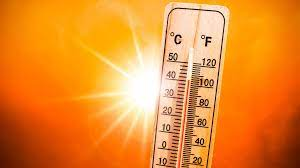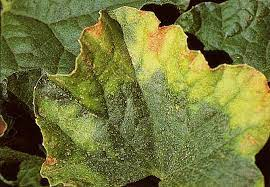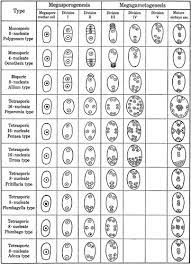Factors Affecting The Rate Of Respiration
Factors
Affecting The Rate of Respiration
A number of factors affect the rate of respiration. Actively dividing meristematic cells have the
highest respiratory rate. The rate of
respiration is relatively steady during the growth phase but generally picks up
during the ripening of fruits. This
sudden increase in the rate of respiration is termed as climacteric. It generally slows down at maturity and
during senescence.
Factors affecting respiration can be classified into two
categories-
External Factors And
Internal Factors
External Factors:
Many external factors like temperature, oxygen, light, CO2,
etc., affect the rate of respiration.
Temperature:
Temperature significantly affects the rate of respiration as it does with other enzymatic processes. Usually the rate of respiration increases with increase in temperature in the range of 0-45 degree centigrade. For every rise of 10 degrees, i.e., between 0-25 centigrade, the rate of respiration increases 2-3 times following Vant Hoff’s law. It means that the Q10 of respiration in the temperature range of 0-25 degrees centigrade is 2 to 3. However, above 30 degree centigrade, there is a decline in the rate of respiration. This decrease is apparently due to denaturation and destruction of respiratory enzymes at high temperature. Low temperatures also inhibit respiration. It almost stops at freezing temperature because the enzymes become inactive at very low temperature. It is due to this reason that fruits and vegetables can be stored in refrigerator for long periods without being spoiled. If the temperature is high during night, then more reserved food is utilized in respiration. On the contrary, during cool nights, the rate of respiration is low, hence very little amount of reserved food is utilized. This is the reason for larger sized potato tubers in the hilly region.
Oxygen:
Oxygen is essential for aerobic respiration. It is the ultimate acceptor of electrons (hydrogen) in electron transfer system. Generally, at low oxygen concentration, both aerobic and anaerobic respiration occur. Under such circumstances, RQ values are greater than unity. As oxygen concentration approaches zero, the liberation of carbon dioxide is only due to anaerobic respiration, hence, the RQ becomes infinity. When a living tissue is kept in low concentration of oxygen, it respires anaerobically and therefore, the energy released is much less than that would have been obtained from the same amount of substrate under aerobic conditions. To obtain more energy during anaerobic condition naturally more substrate would have to be burn. The above fact shows that to conserve substrate, a sufficient supply of oxygen is essential. Louis Pasteur, a French microbiologist observed that proper supply of oxygen is essential to inhibit fermentation of sugars by yeast cells (i.e., to stop anaerobic respiration). This is known as Pasteur’s effect. A very high concentration of oxygen is undesirable as it inhibits the activity of respiratory enzymes thereby reducing the rate of respiration.
Light:
Light affects respiration immediately in the following ways:
It raises the temperature which in turn, increases the rate of respiration. In light, sugars are synthesized which are readily utilized as respiratory substrate, hence, the rate of respiration increases. Stomata open in light and thus facilitate gaseous exchange.
Concentration of carbon dioxide:
As the concentration of carbon dioxide increases in the atmosphere, the rate of respiration decreases. In comparison to aerial atmosphere, the soil atmosphere has more carbon dioxide due to poor diffusion of gases. As a result, root hairs have low rate of respiration. Beside this, the carbon dioxide concentration also affects respiration indirectly in the following ways. High concentration of carbon dioxide leads to stomatal closure. It also stops the exchange of gases. Hence, the rate of respiration also decreases. High concentration of carbon dioxide inhibits many metabolic activities. As a result, the rate of respiration also decreases. This is the reason for preserving many fruits in high concentration of carbon dioxide.
Water:
Most of the plant tissues contain about 80-90% of water, therefore, small changes in water contents generally do not have any marked effect on the rate of respiration. Water is essential for accelerating enzyme activity. In conditions of water stress, therefore, the rate of respiration decreases. Dry fruits and seeds in which respiratory enzymes are least active, show minimum respiration. Carbohydrates on hydrolysis change into soluble sugars which serve as respiratory substrates. Therefore, hydration of tissue would increase respiration.
Pollutants:
Pollutants affect respiration in the following ways:
High concentration of gaseous air pollutants like SO2, O3, NOX inhibit respiration by damaging the cell membrane. Gaseous pollutants increase the pH, which in turn, affects electron transport system, thus inhibiting respiration. At low concentration of certain pollutants, for example, SO2, NOX the cellular activity increases in order to metabolize pollutants to more toxic forms. It is accompanied with the increase in the rate of respiration. Heavy metal pollutants like lead and cadmium inhibit respiration by inactivating respiratory enzymes.
Chemicals:
Chemicals such as cyanide, carbon monoxide, malonate, iodoacetate etc.,are respiratory inhibitors. However, treatment of tissue with small quantities of chloroform, acetone , salts, acids, etc., bring about an increase in respiratory activity.
The respiratory rate of injured plant generally increases
due to the following two reasons:
In injured part the accessibility of substrates to the
enzymes increases. Some of the cells of the injured parts become meristematic
and grow actively.
Actively growing cells have higher respiration than mature cells.
Internal Factors:
Protoplasm and respiratory substrates are the two important
internal factors which affect respiration.
Protoplasm:
The meristematic cells have more protoplasm than mature cells. Hence, the meristematic cells have higher rate of respiration than the mature cells. Beside this, the amount of water and enzymatic machinery present in the cells also affect respiration.
Respiratory substrates:
Respiratory substrates are the substances which on oxidation provide necessary energy for growth. Soluble carbohydrates such as glucose, lactose, maltose etc., are the common respiratory substrates. Increase in the amount of substrates (up to a certain extent) naturally increases the rate of respiration.













Comments